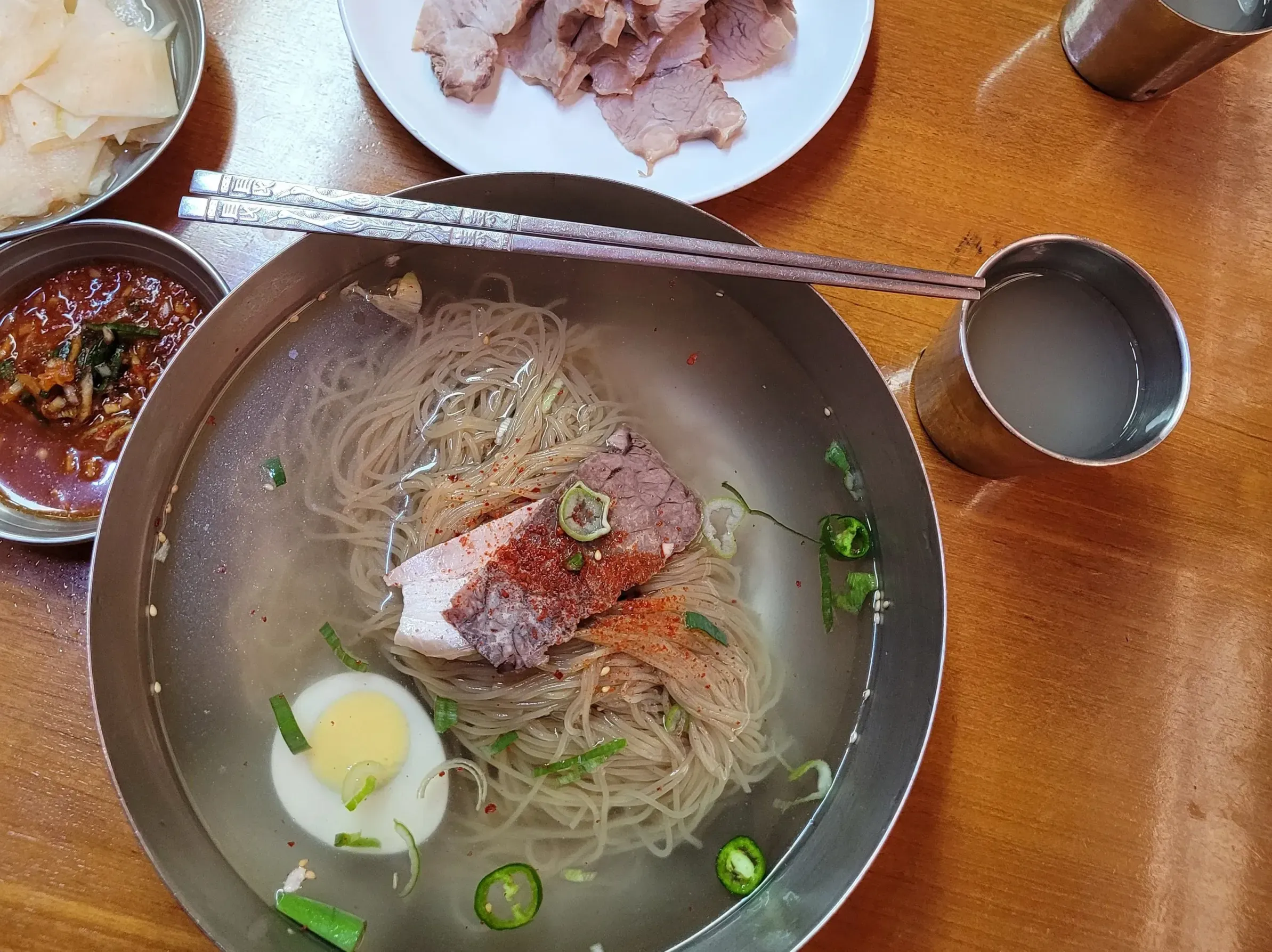5 bland food to try in Seoul
Give your tastebuds a break
With its diverse and bold flavors of its cuisine, food is likely to be an integral part in your holiday to Korea. From Korean fried chicken, barbecue, to tteokbokki, the flavours that Korean cuisine has to offer is an experience that you wouldn’t want to miss! However, if you are afraid of being overwhelmed with the flavours — or you have already gone overboard and need a break — here is a list of some ‘bland’ Korean dishes which you should try!
Give your tastebuds a break!
Seolleongtang
Source:https://la-luz.tistory.com/
Seolleongtang is a traditional Korean soup made by simmering beef bones for several hours until the broth becomes rich and milky. The soup is typically served with thinly sliced beef, rice, and a variety of side dishes such as kimchi. Seolleongtang is a popular dish in Korea, particularly during the winter months when the hot soup is especially comforting. It is also considered a healthful food due to the high collagen content in the broth, which is believed to have anti-inflammatory properties and be beneficial for skin and joint health.
Seolleongtang is usually served without seasoning, and might taste quite bland if you were to eat it as it is served. Seollongtang specialty restaurants will typically provide pepper, salt, and scallions, and each diner will season their own meal with the right amount of seasoning for themselves.
Where to have Seollongtang in Seoul:
📍 Shinseon Seollongtang — a chain restaurant which is very popular with tourists and locals. There are multiple branches across Seoul, with the most convenient locations being the ones at Seoul University and Konkuk University.
📍Mapo Yangji Seollongtang — located near Gongdeok Station
📍Han Chon Ox Bone Soup — a chain restaurant with multiple branches across Seoul, at locations such as Mangwon, Gangnam, and Yeongdeungpo.
Mulnaengmyeon

Mulnaengmyeon is a cold Korean noodle dish that is especially popular during the hot summer months. The name of the dish literally means "water cold noodles" in Korean, and as the name suggests, the noodles are served in a chilled broth, making it a very refreshing dish. The noodles are made from buckwheat and starch, and are typically long and thin. It is also low in calories and high in nutrients, making it a healthy meal option.
The broth of Mulnaengmyeon has a very light taste to it. Diners will typically be able to add their own vinegar and mustard to the dish to enhance the taste to suit their own liking. Mulnaengmyeon is best eaten with boiled pork or beef.
Where to have Mulnaengmyeon in Seoul:
📍Woo Lae Oak — located near Euljiro-4-ga station
📍Pildong Myeonok — located near Chungmuro station
📍Myeongdong Hamhung Myeonok — located near Myeongdong station
Juk
Juk is the Korean term for rice porridge, and is a staple food that is often eaten for breakfast, as a light meal, or when someone is not feeling well. It is made by simmering rice with water or broth until the rice grains break down and form a thick, smooth porridge. It is a simple, easy-to-digest meal that is often recommended for people who are experiencing digestive issues or have a weakened immune system.
By itself, Juk can be rather bland. However, it is usually eaten with a variety of ingredients and toppings which gives it its flavours. In Korea, some popular combinations of juk include abalone juk, pumpkin juk, chicken juk, and seafood juk.
Where to have Juk in Seoul:
📍Bonjuk — a chain restaurant with multiple branches across Seoul. There are branches in most of the tourist areas like Myeongdong and Hongdae.
📍Song Porridge — there are a few branches across Seoul, located near Mapo Station, Chungmuro Station, and Gasan Digital Station.
📍Juk Story — a chain restaurant that is conveniently located at many locations across Seoul, such as in Gangnam COEX, Daehak-ro, and Itaewon.
Dwaeji Gukbap
Dwaeji Gukbap means ‘pork soup rice’ in Korean, and is especially popular in Busan. The dish consists of a hearty broth made from pork bones, which is served with rice and sliced pork. To make the broth for Dwaeji Gukbap, pork bones are boiled for several hours along with garlic, green onions, and other seasonings. The resulting broth is rich but not overpowering. It is served with sliced pork belly, which is simmered in the broth until it becomes tender and juicy.
The soup is typically served with a bowl of steamed rice on the side, which can be added to the broth as desired. The soup when served is typically rather bland, and diners can add their own accompaniments and topping of shrimps, gochujang, or other seasoning that the restaurant might provide.
Where to have Dwaeji Gukbap in Seoul:
📍Gwanghwamun Gukbap — near Gwanghwamun Station
📍Donsoobaek — a chain restaurant with many branches conveniently located across Seoul. To name a few, there are branches at Hongdae, Seoul Station, and City Hall.
📍Hadongjin — near Sindang Station
Kalguksu
Kalguksu is a Korean noodle soup that is made with handmade wheat flour noodles, and is a traditional dish in Korea. The name of the dish means "knife-cut noodles" in Korean, as the noodles are traditionally made by cutting the dough with a knife into thin, flat pieces. The noodles are then boiled in a pot of water until they are cooked through, and are served in a hot broth made from chicken or beef.
By itself, Kalguksu could taste rather bland. However, it is usually served along with vegetables such as beansprouts, mushrooms, and onions. Some places also season the Kalguksu with some chili to give it more flavour.
Where to have Kalguksu in Seoul:
📍Myeongdong Gyoza - there are multiple branches across Seoul, with the main store being located in Myeongdong.
📍Myeongdong Kalguksu Nammun Gyoza — Located near Hoehyeon station
📍Sarangbang Kalguksu — Located near Euljiro-3-ga station